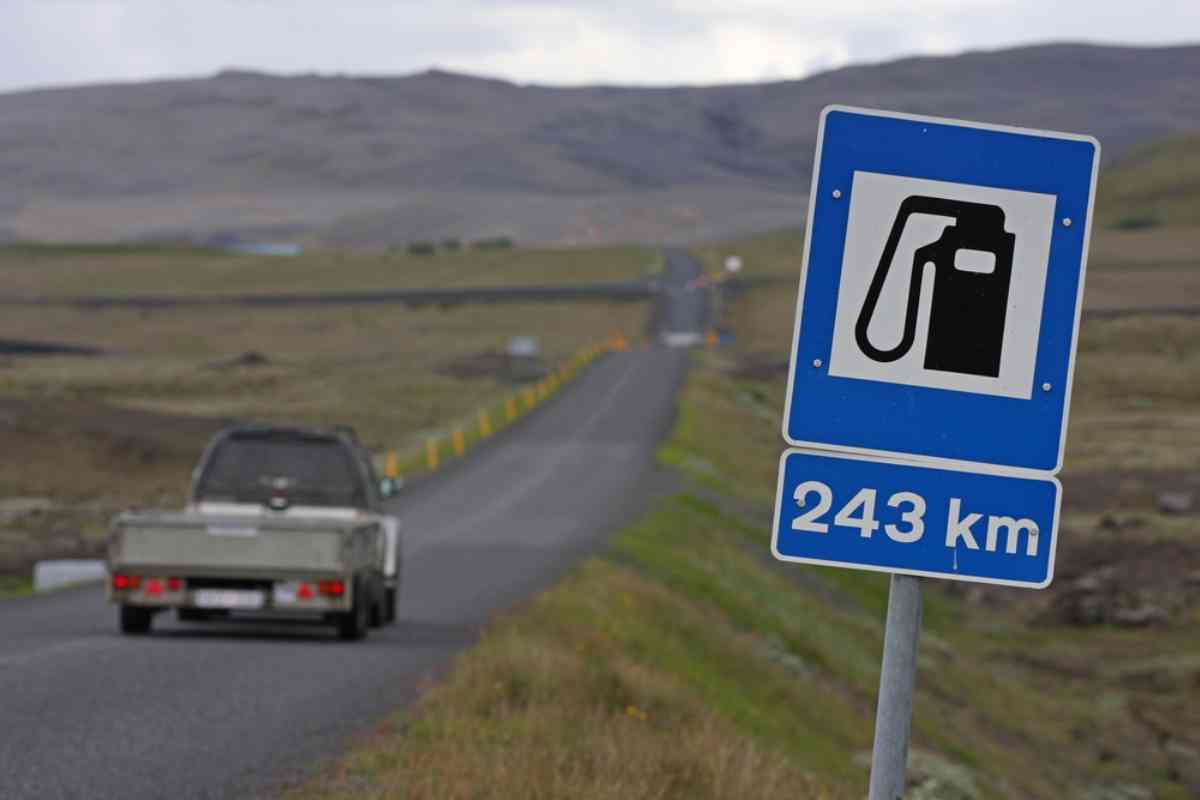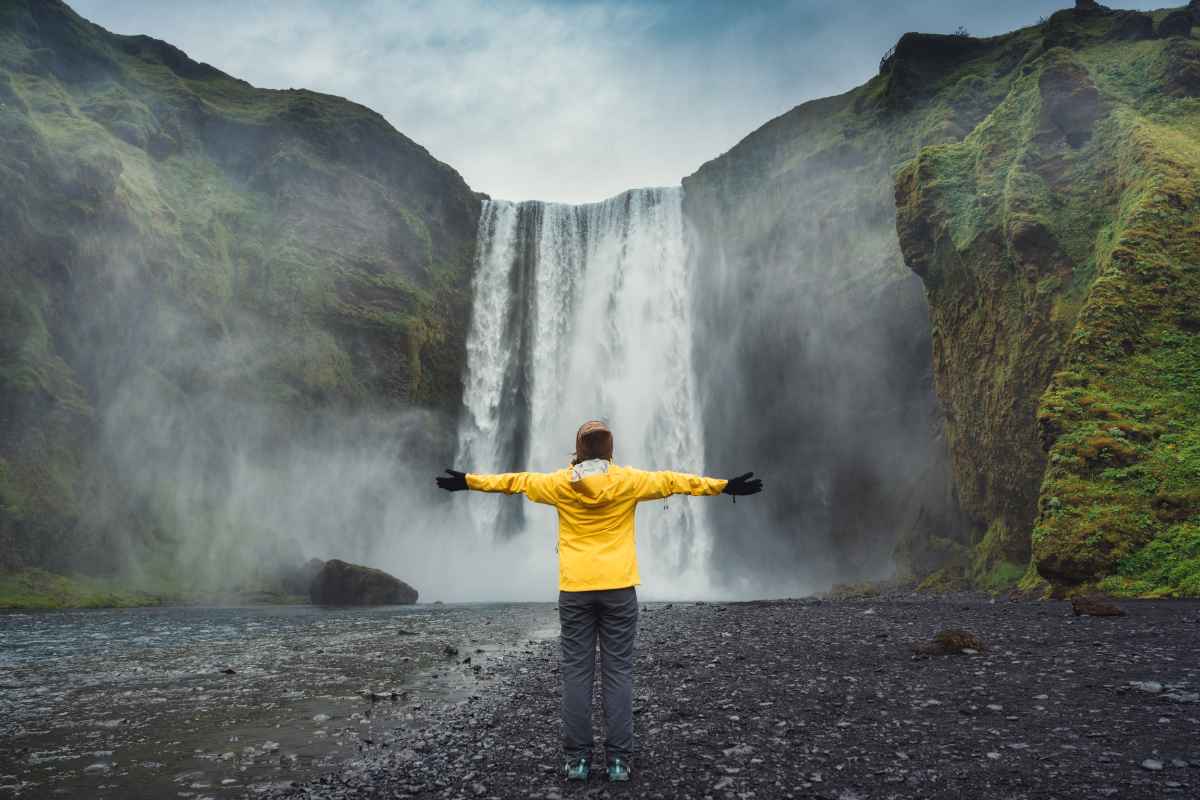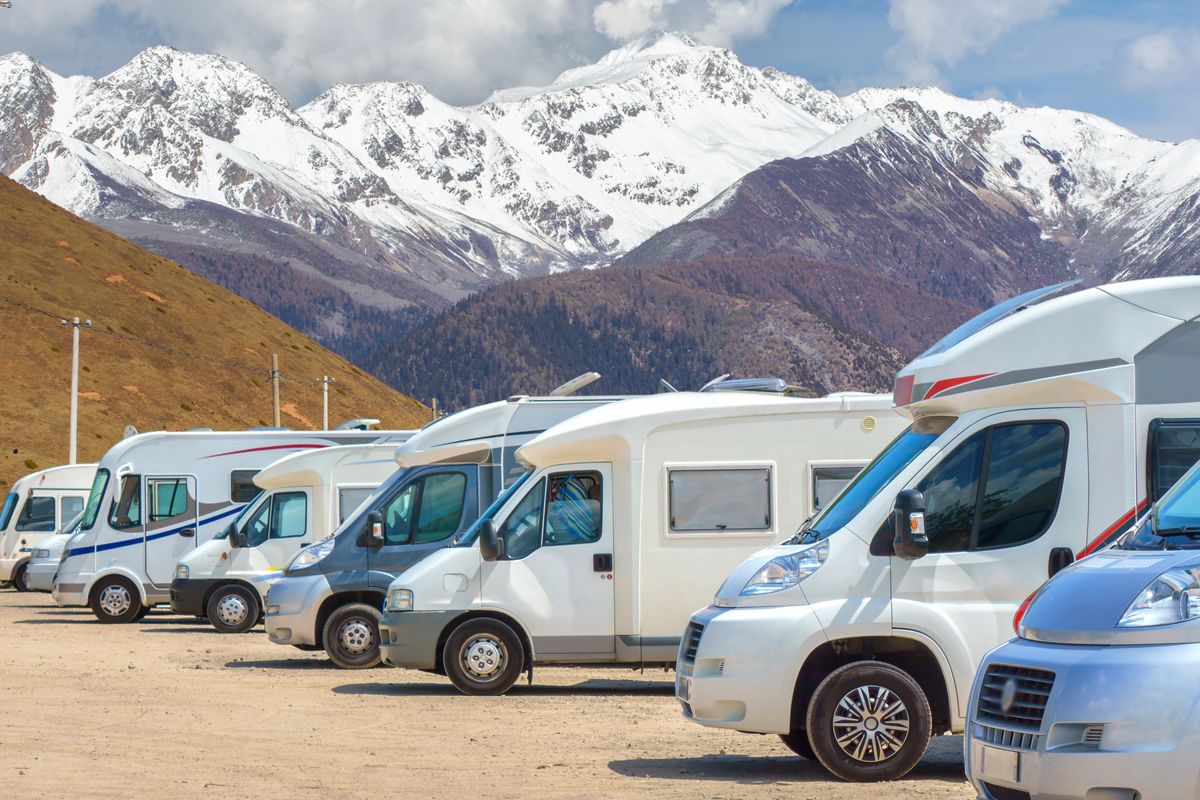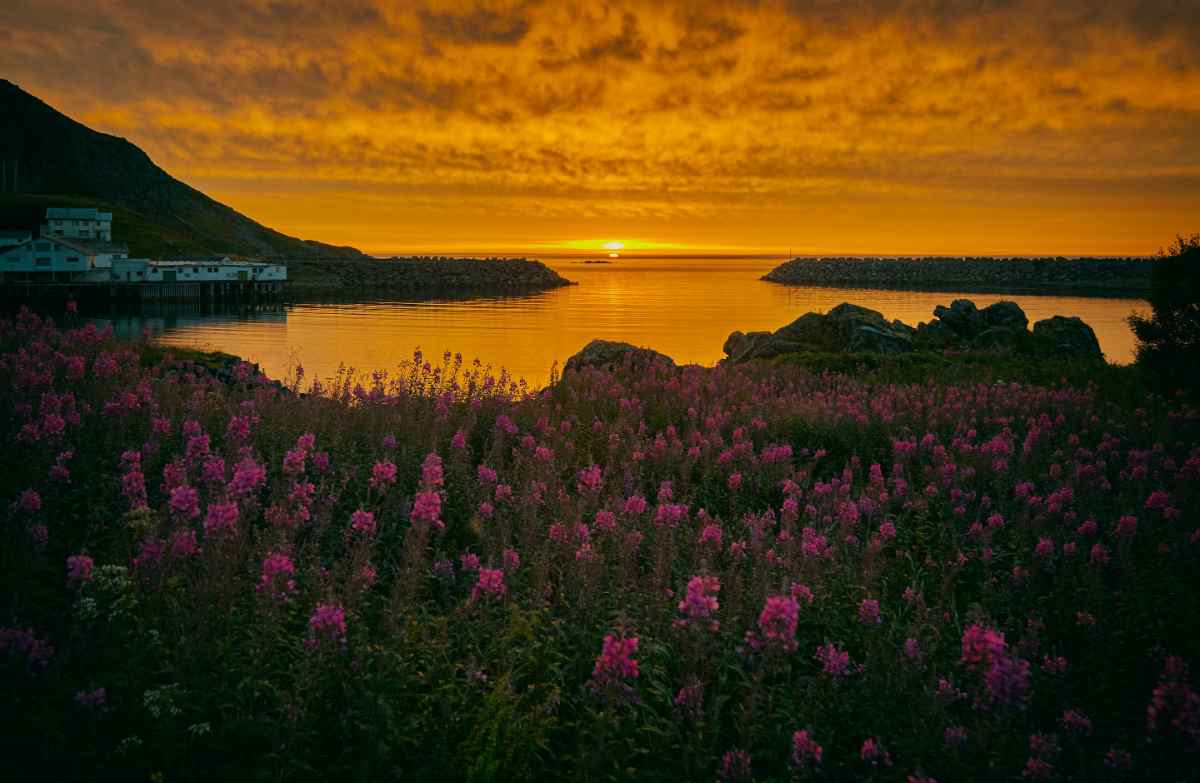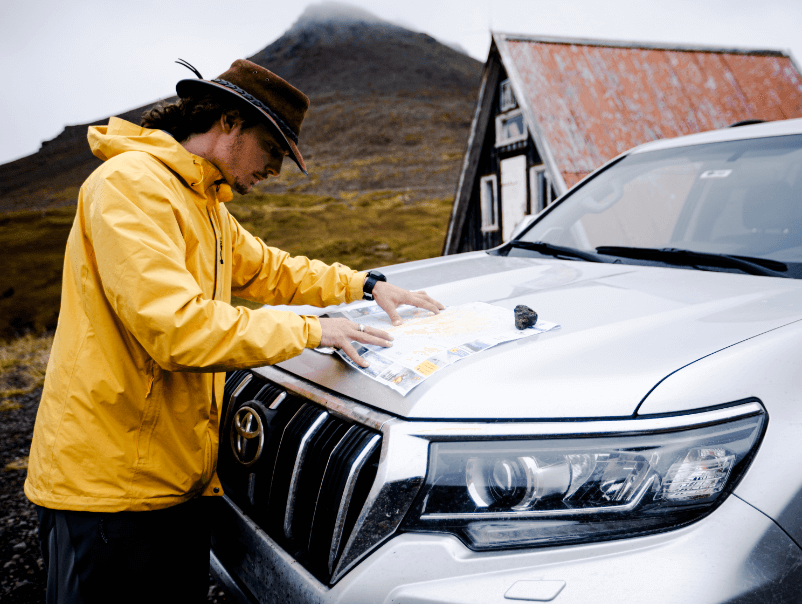Planning a trip to Iceland sounds like a dream, right? Vacationing in Iceland offers waterfalls, glaciers, and those Instagram-famous hot springs. But here's the thing: Iceland isn't your typical vacation spot. Ever thought about how you'll handle four seasons in one day or why gas stations are more important than you think?
Most travelers don't, and they pay the price (literally). But that won't be you. This guide breaks down everything you need to know for an itinerary for Iceland, from must-see spots to money-saving tips. One of the best ways to experience it all? Rent a camper in Iceland and enjoy the freedom to explore at your own pace. Ready to plan the Iceland trip everyone else wishes they had?
Why Visit Iceland?
There are so many reasons to visit Iceland that it's simply impossible to list them all. But here are some of the top reasons why you should add Iceland to your travel bucket list:
Unique Natural Wonders
Exploring Iceland is like stepping into a living postcard. Here's what makes it unforgettable:

- Glaciers and Ice Caves: Visit Vatnajökull, Europe's largest glacier, and wander through its surreal blue ice caves. These caves are formed by glacier movements and meltwater, creating a frozen wonderland.
- Volcanoes and Geothermal Activity: With over 30 active volcano systems, Iceland puts on a fiery show. Highlights include Eyjafjallajökull and the striking Askja caldera.
- Geysers and Hot Springs: Our little island sits on top of a hotspot that brings geysers and hot springs to the surface.
- Waterfalls and Black Sand Beaches: Iceland has over 10,000 waterfalls, while our black sand beaches are the result of volcanic eruptions and erosion.
Iceland’s Rich Cultural Heritage
Iceland isn't just about epic landscapes. Its cultural scene is just as mesmerizing. Here's why you should visit Iceland for more than just the views:

- Viking Legacy: Iceland's Viking roots run deep. From ancient sagas to historical sites, you'll feel the spirit of explorers like Ingólfur Arnarson, who settled here in 874 CE.
- Thriving Contemporary Arts: Icelandic artists push boundaries, blending nature, identity, and culture in everything from abstract landscapes to bold sculptures.
- Music and Performance: With legends like Björk and Sigur Rós, Iceland's music scene is legendary. Don't miss the Dark Music Days festival for groundbreaking performances.
- Literature and Storytelling: Storytelling is in Iceland's DNA. Ancient sagas, modern novels, and bustling literary festivals prove that words still matter here.
- Innovative Cultural Spaces: Explore places like Fischersund, where art, music, and even perfume collide for unforgettable sensory experiences.
Best Time to Visit Iceland
Choosing the best time to visit Iceland is like asking a Viking to pick their favorite battle. It's not easy, and it really depends on what you're after. Here are some things to consider:
Visiting Iceland in Summer ☀️
Planning to spend in Iceland during the summer? You're in for a treat:
- Midnight Sun: Experience nearly 24 hours of daylight from mid-May to mid-July. Imagine playing midnight golf or watching a sunset that never ends. It's surreal.
- Milder Weather: Expect temperatures between 10°C to 15°C (50°F to 59°F). It's perfect for exploring without freezing.
- Improved Accessibility: Roads to remote places, including the Highlands, finally open up, letting you reach those hidden gems.
- Wildlife Viewing: Summer is prime time for spotting puffins and whales in their natural habitats.
- Outdoor Adventures: Long days and pleasant weather are perfect for hiking, camping, and soaking in Iceland's breathtaking landscapes.
Visiting Iceland in Winter ❄️
If you're planning a trip to Iceland in winter, then be prepared to see some serious magic:

- Northern Lights: Winter is your best shot at catching the aurora borealis dancing across the sky. The season runs from late September to early April, so pack warm and stay up late. It's worth it.
- Winter Landscapes: Imagine snow-covered mountains, frozen waterfalls, and icy beaches. It's like stepping into a fairytale. Your camera will love it.
- Winter Activities: Explore blue ice caves, hike glaciers, ride a snowmobile, or soak in geothermal pools surrounded by snow. It's Iceland at its most magical.
- Fewer Crowds: Fewer tourists mean quieter attractions and more space to enjoy Iceland's beauty without feeling rushed.
- Festive Atmosphere: From Christmas markets to New Year's Eve fireworks, Iceland's winter celebrations are unforgettable. Expect cozy vibes everywhere.
Planning Your Itinerary for Iceland: The Step by Step Guide
Organizing a trip can seem overwhelming, but following these clear steps will help you create a personalized itinerary for Iceland:
- Define Your Dates and Trip Duration: Decide how many days you can dedicate to exploring the island. Whether it's a short 3-4 day stopover or a more extensive 7-10 day adventure, your travel dates will shape your overall plan.
- Choose Your Travel Style: Determine if you prefer a self-drive trip to Iceland by renting a campervan or if you'd rather combine flights, hotels, and tours. This decision will influence your itinerary’s flexibility and pace.
- Select Your Must-See Destinations: Identify the key attractions you don’t want to miss. From the iconic Golden Circle and the breathtaking South Coast to the unique landscapes of Northern Iceland and the Westfjords, prioritize destinations based on your interests.
- Plan Your Daily Activities: Break your itinerary into daily segments. Consider distances between attractions and the time needed for activities. Use existing sample itineraries as a reference and adapt them to fit your schedule. In case you decide to rent a vehicle, you can also follow our gas station guide to find out where to fill up and how much to pay when you're vacationing in Iceland.
- Prepare a Contingency Plan: Iceland's weather can be unpredictable. Make sure to have backup plans in case of sudden changes in weather or road conditions. Tools like vedur.is and umferdin.is can help you stay updated. We also recommend you to consult how to drive in Iceland to respect each and every one of the traffic regulations.
- Book in Advance: To secure the best rates and availability, make reservations early for accommodations, vehicle rentals, and popular tours or activities.

By following these steps, you'll have a personalized itinerary for Iceland that sets the stage for an unforgettable adventure. Now, it's time to move forward and learn exactly how to get to Iceland.
How to Get to Iceland
Flights to Iceland
Getting to Iceland is easier than you think. Most international flights land at Keflavík International Airport (KEF), the main gateway to this epic destination. Icelandair is the biggest player, connecting Iceland to Europe and North America. Play Airlines is also making waves with affordable routes to popular cities.
You'll find regular flights from Air Canada, British Airways, Delta, Lufthansa, and United Airlines too. Popular routes include Copenhagen, London, Amsterdam, Paris, and Frankfurt. If you're flying from North America, look for flights from Boston, Newark, or New York (JFK). Book early for the best deals and seat selection.
Entry Requirements & Visa
When planning a trip to Iceland make sure you've got your paperwork sorted. Most travelers need a passport valid for at least three months beyond their stay. If you're from a visa-exempt country, you can explore Iceland for up to 90 days within a 180-day period without needing a visa.

But here's the catch: starting in 2025, you'll need ETIAS approval before you go. It costs $7, is free for under-18s and over-70s, and is valid for three years or until your passport expires. It's quick and easy to apply online, so don't wait until the last minute.
Best Way To Travel Around Iceland
If you're serious about traveling to the island, renting a campervan in Iceland is a game-changer. Here's why:
- Freedom and Flexibility: Travel at your own pace without worrying about hotel check-ins or rigid schedules.
- Wake Up to Epic Views: Imagine starting your day with glacier views or catching a sunrise on a black sand beach. It's unforgettable.
- Access to Remote Areas: Reach off-the-grid spots like the Westfjords and Highlands, where public transport won't take you.
- Save Money: Cut down on accommodation and food costs by cooking your own meals.
- Ultimate Convenience: It's your hotel and transport all in one. Why do it any other way?

Renting a Campervan vs. Public Transport
Exploring the arctic landscapes of Iceland is incredible, but how you get around makes all the difference. In fact, if you're wondering what’s the best way to see Iceland, many travelers find that a self-drive trip to the island offers unmatched flexibility:
- Limited Coverage: Public transportation barely reaches Iceland's remote gems, like hidden waterfalls or isolated arctic beaches. You'll miss out without your own wheels.
- Infrequent Schedules: Buses don't run often, especially in winter. Miss one, and you're stuck waiting for hours.
- Costly for Multiple Stops: Hopping from one Arctic wonder to another gets expensive fast with public transport.
- Lack of Flexibility: You're tied to fixed routes and timetables, leaving no room for spontaneous detours.
Choosing the Right Campervan for Iceland’s Roads
Picking the right camper for Iceland isn't just about comfort. It's about survival, freedom, and having the most epic road trip of your life. Here's how to choose like a pro:
- Group Size: Don't cram five people into a tiny van. Make sure there's enough room for everyone to sleep comfortably.
- Comfort Level: Whether you're fine with basic amenities or want a touch of luxury, Iceland's got you covered. Choose from budget campervans or decked-out models with all the bells and whistles.
- Intended Routes: Planning to hit the Highlands or F-roads? You'll need a 4x4 camper. No exceptions. Think Dacia Duster or Suzuki Jimny with a rugged rooftop tent built for Iceland's wild weather.
- Budget: From compact Renault Kangoo vans to larger VW California Beach models, pick a camper that fits your wallet.
- Season: Visiting in winter? Make sure your camper is equipped for icy roads and freezing nights. Not all are, so double-check before you book.

If you're wondering if you'd survive the cold in a campervan, don't worry. If you rent a campervan from us, you're in luck. Our rooftop tents are specially designed for Iceland's tough conditions. Made from thick fiberglass, they're built to withstand strong winds while offering excellent thermal insulation. Sleep warm and safe, no matter how wild the weather gets.
Must-See Destinations in Iceland
Now comes the good part: the places you absolutely can't miss on your Icelandic adventure. Here are a few highlights to get you started:
The Golden Circle
If you're making travel plans for Iceland, the Golden Circle is a must. It's the country's most popular tourist route, and for good reason:
- Thingvellir National Park: This UNESCO World Heritage Site is where Iceland's first parliament met. But the real showstopper is the dramatic rift valley, where you can literally stand between the North American and Eurasian tectonic plates.
- Gullfoss Waterfall: Feel the power of nature as water plunges 32 meters (105 feet) into a rugged canyon. It's loud, wild, and breathtaking from every angle.
- Geysir Geothermal Area: Home to the famous Strokkur geyser, which erupts every 5 to 10 minutes, shooting boiling water up to 30 meters (98 feet) high. It's like nature's own fireworks show.
South Coast Wonders
While on your holiday in Iceland, don't skip the South Coast. It's here where Iceland cranks the drama up to eleven:

- Reynisfjara Black Sand Beach: This isn't your average beach. With jet-black volcanic sand, towering basalt columns, and the eerie Reynisdrangar sea stacks rising out of the ocean, it feels like you've landed on another planet. Add the nearby Hálsanefshellir cave, and you've got a scene straight out of a fantasy movie.
- Skógafoss Waterfall: Standing 60 meters (197 feet) tall, Skógafoss roars as it crashes down, sending mist everywhere. Catch a sunny day, and you'll spot a rainbow or two.
- Jökulsárlón Glacier Lagoon: Icebergs float serenely in a deep-blue lagoon, drifting towards the Diamond Beach, where they rest on black sand like sparkling gems. It's hauntingly beautiful and utterly unforgettable.
Northern Iceland & The Westfjords
Looking to experience the true spirit of Iceland? Northern Iceland is where it's at:
- Akureyri: Dubbed the 'Capital of the North,' this charming town is packed with character. It's a great base for exploring, with colorful historic buildings, quirky museums, and a buzzing arts scene. You'll feel right at home.
- Lake Mývatn: This isn't just another pretty lake. Surrounded by volcanic craters and twisted lava formations, it's a playground shaped by fire and ice. Don't miss the Hverir geothermal area with its bubbling mud pots and steam vents. Finish your day at Mývatn Nature Baths, where you can soak in hot, mineral-rich waters with a view of the surreal landscape.
If you're looking to escape the crowds and experience Iceland at its wildest, plan your self-drive trip to the Westfjords. This place isn't just remote. It feels like the edge of the world. From kayaking in fjords to hiking in complete solitude, the Westfjords are all about raw nature.

- Hornstrandir Nature Reserve: Untouched and rugged, it's a haven for Arctic foxes and jaw-dropping landscapes. There are no roads here, so you're truly off the grid.
- Látrabjarg Cliffs: Europe's largest bird cliff is packed with millions of seabirds, including puffins. Get your camera ready for some seriously close encounters.
- Dynjandi Waterfall: Imagine a cascade that tumbles down a 100-meter cliff (328 feet), creating a series of waterfalls. It's loud, dramatic, and impossible to forget.
- Rauðasandur Beach: Pinkish-red sands stretch for miles, a surreal contrast to Iceland's usual black beaches. It's eerie, beautiful, and empty.
Where To Stay in Iceland?
Hotels, Guesthouses and Hostels
Finding a place to stay in Iceland is easy-peasy, and there's something for every budget. Let's take a look at what your options are:
- Luxury Hotels: Want to go all out? The Reykjavik EDITION serves up waterfront views, a Michelin-recommended restaurant, and a luxury spa. Hotel Borg, in the heart of Reykjavik, keeps it classy with family rooms and easy access to cultural hotspots.
- Mid-Range Options: For stunning glacier views, check out Fosshotel Glacier Lagoon. It's got a sauna and an elegant restaurant to warm up after a day of exploring. Hotel Kría in Vik is perfect for exploring South Iceland's iconic sights.
- Budget-Friendly Stays: Traveling to Iceland on a shoestring? KEX Hostel in Reykjavik offers a fun social scene in a repurposed biscuit factory. For a quieter vibe, Grai Hundurinn Guesthouse in East Iceland is cozy, clean, and easy on the wallet.
Campervans & Camping in Iceland
If you're looking to experience Iceland up close and personal, camping and campervans are the way to go. Not only does it save you money, but waking up to glacier views is unbeatable. Iceland has tons of campsites with showers, kitchens, and even Wi-Fi. But don't get any wild camping ideas.

Since June 2016, it's illegal to sleep in campervans outside organized campsites without the landowner's permission. If you're into tent camping, you can pitch for one night on uncultivated land, but longer stays or groups need permission.
Thinking about taking the campervan route? Check out this Camping Iceland Guide for tips on where to go. For budget-friendly campsites, here's a handy list of Cheap Campsites in Iceland.
Unique Accommodation Options
Looking to make your self-drive trip to Iceland unforgettable? Skip the generic hotels and check out these unique stays:
- Bubble Hotels: Imagine sleeping under the stars in a transparent bubble. At Bubble Hotel Ölvisholt, known as the '5 Million Star Hotel,' you'll get front-row seats to the Northern Lights. For a more secluded vibe, Bubble Hotel Horsshagi offers geodesic domes surrounded by Iceland's scenic countryside.
- Igloo Hotels: Want a cozy igloo experience? Aurora Igloo near Hella lets you snuggle up under the stars with a chance to catch the Northern Lights. For a luxury twist, Panorama Glass Lodge features glass cabins with private hot tubs, perfect for soaking while admiring Iceland's epic landscapes.
Iceland Packing List: What to Bring
Packing for Iceland isn't just about stuffing your suitcase with sweaters. The weather changes faster than you can say 'Eyjafjallajökull,' so you need to be smart about what you bring. Here's what you'll need:

Clothing Essentials
- Layer Up: Iceland's weather is as unpredictable as it gets. Start with moisture-wicking base layers, add insulating mid-layers, and top it off with a waterproof, windproof outer layer. This system keeps you warm and dry, no matter what the skies throw at you.
- Sturdy Boots: Leave the fashion shoes at home. You'll need waterproof, comfortable hiking boots that can handle rough terrain and wet conditions.
- Accessories: Don't forget a warm hat, gloves, and thermal socks. If you're chasing the Northern Lights, hand warmers are a lifesaver.
Travel Gear
- Backpack: A sturdy daypack with a waterproof cover is a must. You'll need it for day hikes and sightseeing.
- Camera Gear: Iceland is insanely photogenic. Make sure you have a good camera, spare batteries, and a tripod for capturing those epic landscapes.
- Reusable Water Bottle: Tap water is clean and free. Save money and the environment by bringing a reusable bottle.
- Power Bank: With all the photo-taking, your phone will need a boost. A reliable power bank keeps you connected.
- First Aid Kit: Better safe than sorry. Pack the basics, including blister patches for all that hiking.
Sample Itineraries
Since we know how hard it is to plan a trip to Iceland, we've put together some sample itineraries for all types of travelers. Whether you're into adventure, nature, or culture, there's something for everyone:
3-Day Stopover
Got just three days in Iceland? No problem. Here's how to squeeze the best out of it:

- Day 1: Land, drop your bags, and hit Reykjavík. Check out Hallgrímskirkja Church for epic city views and stroll down Laugavegur for shopping and local eats. On your way from the airport, unwind at the Blue Lagoon. It's touristy, but the milky blue water is worth it.
- Day 2: Time for the Golden Circle day trip. Visit Þingvellir National Park, watch Strokkur erupt at Geysir, and feel the roar of Gullfoss waterfall. It's an easy loop packed with jaw-dropping sights.
- Day 3: Wrap up your Iceland escape with a morning in Reykjavík. Hit a museum or go whale watching if you're feeling adventurous. Then, head to Keflavík Airport and start planning your next trip back.
7-Day Ring Road Adventure
A week on Iceland's Ring Road is a wild ride through some of the planet's most stunning landscapes. Here's the perfect seven-day Iceland itinerary:

- Day 1: Land in Reykjavík. Check out the vibrant city scene and grab some local eats.
- Day 2: Hit the Golden Circle, then cruise to Vík. Don't miss the black sand beaches and towering basalt columns.
- Day 3: Explore the South Coast. Skógafoss, Reynisfjara, and Jökulsárlón Glacier Lagoon are waiting to blow your mind.
- Day 4: Wind through the East Fjords, ending at Lake Mývatn. Think volcanic landscapes and geothermal magic.
- Day 5: Discover North Iceland with stops at Mývatn, Dettifoss, and the stunning Ásbyrgi Canyon.
- Day 6: Head west to the Snæfellsnes Peninsula for rugged coastlines and charming villages.
- Day 7: Return to Reykjavík and soak up the city vibe before catching your flight.
10-Day In-Depth Exploration
Ten days in Iceland lets you dive deep into its wild beauty without rushing. Here's how to do it right, with or without a guided tour:

- Day 1: Arrive, shake off the jet lag at the Blue Lagoon, and explore Reykjavík.
- Day 2: Head to the Snæfellsnes Peninsula for rugged coastlines and epic hiking trails.
- Day 3: Make your way to North Iceland with whale watching in Akureyri.
- Day 4: Explore the volcanic wonders of the Mývatn area and the power of the Dettifoss waterfall.
- Day 5: Discover the hidden beauty of East Iceland's fjords and quaint villages.
- Day 6: Visit Jökulsárlón Glacier Lagoon and tackle a glacier hike for insane views.
- Day 7: Hit the highlights of the South Coast, including Reynisfjara and Skógafoss.
- Day 8: Go off the beaten path with a Landmannalaugar day trip in summer or an ice cave tour in winter.
- Day 9: Explore the Golden Circle's iconic sights like Geysir, Gullfoss, and Þingvellir.
- Day 10: Wrap up in Reykjavík before catching your flight.
How To Budget Your Iceland Trip
As you might have heard from people who have visited Iceland before, our island is not exactly known for being a budget-friendly destination. However, with proper planning and some smart choices, it doesn't have to be a wallet-draining experience either. Here is what you need to keep in mind before coming to visit us.
Average Costs Breakdown
Here's a breakdown of the average daily expenses for a traveler in Iceland:
- Accommodation: Budget around $94.50 per person for hotels or guesthouses.
- Transportation: If you're renting a car or using public transport, set aside about $23 per person each day.
- Food: Eating out adds up fast. Expect to spend around $51 per day. A basic meal costs $24, while a three-course dinner for two hits $141.
- Activities: Tours and excursions vary, but plan on $50 to $100 daily for things like glacier hikes or whale watching.
- Miscellaneous: One-way bus tickets are $5, taxi starts at $6.40, and gasoline is around $8-9 per gallon.
That puts your total daily budget at roughly $300 per person.
Money-Saving Tips & Tricks
Planning a self-drive trip to Iceland doesn't have to drain your wallet. Here's how to stretch your budget without missing out:

- Travel Off-Peak: Visit from September to May (excluding December) for cheaper flights and accommodations. Fewer tourists mean better deals.
- Use Discount Cards: Grab the Reykjavik City Card for free access to museums, pools, and public transport. The Reykjavik Welcome Card gets you discounts on attractions and shops.
- Cook Your Own Meals: Eating out is pricey. Stay in places with kitchens and shop at budget supermarkets like Bonus and Kronan.
- Save on Transport: Use public buses in Reykjavík or rent a campervan to combine transport and accommodation.
- Drink Tap Water: Iceland's tap water is pure and free. Bring a reusable bottle and skip buying overpriced bottled water.
- Happy Hours and Pools: Enjoy happy hour deals at bars and visit public pools instead of expensive hot springs.
- Book in Advance: Secure better rates on accommodations and tours by booking early.
Is a Campervan or a Hotel Cheaper?
Looking at the costs of renting a campervan versus staying in hotels in Iceland, the numbers might surprise you:
Cost Comparison
Campervan Rental: For a couple, the daily cost averages around $310. This covers:
- Campervan rental ($200)
- Insurance ($45)
- Gas ($30)
- Campsite fees ($35)

Car Rental + Hotel: Opting for a rental car and hotels costs about $330 per day for two people, which includes:
- Car rental ($90)
- Insurance ($35)
- Gas ($25)
- Hotel accommodation ($180)
Why a Campervan Can Be Cheaper
You might be thinking, '$20 a day isn't that big of a difference.' But over a week, that's $140 saved. It's enough for a glacier hike or a few good meals.
What Affects the Cost?
- Seasonal Prices: Iceland isn't cheap in summer, but prices drop in the off-peak months. If you're flexible with your travel dates, you'll save a lot.
- Vehicle Type: Not all campervans are equal. A 4x4 model is great for rough roads but costs more. If you're sticking to the Ring Road, a standard camper does the job just fine.
- Hotel Quality: Budget hotels can be cheap, but if you're looking at high-end stays, a campervan is a more affordable choice.
- Length of Stay: Renting for longer? Good news. Both hotels and campervans often come with discounts for extended bookings.
Not sure how long to stay in Iceland? Whether you're planning a short stopover or a lengthy expedition, a detailed itinerary for Iceland can help you maximize every moment of your adventure.
Essential Travel Tips & Safety Considerations
We are known to be one of the safest and healthiest countries in the world thanks to our clean air, water, and overall way of life. However, there are a few things to keep in mind during your visit:
Weather Hazards & Road Safety
The weather in Iceland is wild and unpredictable. One minute, it's sunny; the next, you're in a snowstorm, wondering what went wrong. Here's how to survive it:

- Dress Smart: Layer up because temperatures change fast. Start with moisture-wicking base layers, add insulation, and top it off with waterproof and windproof gear.
- Footwear Matters: Leave the sneakers at home. You need sturdy, waterproof hiking boots that can handle mud, ice, and rocky terrain.
- Check the Forecasts: Always check Vedur.is for weather updates and Safetravel.is for travel alerts before heading out.
- Road Conditions: Use Umferdin.is for the latest updates on road closures and conditions.
What to Watch Out For
- Strong Winds: They're no joke and can make driving downright scary.
- Sandstorms: Especially on the South Coast. They'll scratch up your rental car if you're not careful.
- Blizzards and Ice Storms: Common in winter. Be ready for whiteouts and icy roads.
- Floods and Avalanches: Glacial rivers can flood suddenly, and certain areas are prone to avalanches.
Icelandic Etiquette & Local Customs
It always makes us Icelanders smile when visitors come to our island and try to respect our culture and customs. Here are a few tips on how to blend in with the locals:
Language Basics
Throwing in a few Icelandic words is a great icebreaker. Try these:
- Góðan daginn (go-than-n die-in) – Good day
- Hæ / Halló – Hello (Yep, it's that easy)
- Bless – Goodbye
- Takk (tah-k) – Thank you
- Skál – Cheers (You'll need this at the bar)
- Já / Nei – Yes / No
- Afsakið (af-sah-kith) – Excuse me / Sorry

Pro tip: There's no word for 'please' in Icelandic. Politeness is all about your tone, so smile and keep it friendly.
Social Norms
We Icelanders are pretty chill, but we've got a few customs you should know:
- Respect for Nature: Icelanders love their land fiercely. Stick to marked trails, don't mess with wildlife, and leave no trace. Nature is sacred here.
- First Names First: Even in professional settings, Icelanders use first names. No Mr. or Mrs. nonsense.
- Punctuality Matters: If you're late, don't bother showing up with excuses. Just be on time.
- Shoes Off Indoors: Icelanders take off their shoes when entering someone's home. Don't be that guest who tracks mud everywhere.
- Hot Spring Etiquette: Scrub up before you soak. No exceptions. Nobody wants to share a pool with your sweat.
- No Tipping Necessary: Tipping isn't expected, so save your cash for another round of drinks.
- Weather Talk: If you don't know how to start a conversation, talk about the weather. It's unpredictable and always interesting.
- Alcohol Traditions: March 1st is 'Beer Day,' celebrating the end of the alcohol ban. Feel free to join in on the festivities.
- Folklore Respect: Icelanders take their elves seriously. Don't poke fun or ask if they really believe. Just nod and enjoy the stories.
- Child Safety: You might see prams parked outside cafes with babies inside. Don't freak out. It's perfectly normal and safe in Iceland.
- Direct Communication: Icelanders are blunt. Don't take it personally. They just don't do sugarcoating.
- Dining Etiquette: It's polite to say 'Takk fyrir matinn' (Thanks for the food) after meals. It's the local way of showing appreciation.

Emergency Contacts
If you're planning to visit Iceland, knowing the emergency contacts could be a lifesaver. Here's what you need:
- 112: This is Iceland's all-in-one emergency number. Whether you need police, fire services, an ambulance, or search and rescue, 112 connects you to it all. It's available 24/7, works from any phone, and operators can help in multiple languages.
Other Important Contacts:
- Reykjavik Police Station: 444-1000
- Search and Rescue: 570-5900
- Dental Care Services: 575-0505
- General Health Advice Line: 1770
Pro Tip: Download the 112 Iceland app before you go. It lets you send your GPS location to emergency services with one tap. That's a game-changer if you get lost hiking or caught in bad weather.
Environmental Responsibility
You will quickly get scolded by locals if you litter or don't follow the rules of enjoying our nature. Here's what you need to know:
Leave No Trace Principles
Iceland's landscapes are stunning, but they're also fragile. If you're visiting, respect the land by following these Leave No Trace principles:

- Stick to the Path: Stay on marked trails and use designated campsites. Wandering off-track damages the delicate vegetation that takes years to grow back.
- Pack It In, Pack It Out: Don't leave trash behind. If you brought it with you, take it back out. That includes food scraps, which can harm local wildlife.
- Leave What You Find: Resist the urge to pocket a lava rock or wildflower. Leave nature exactly as you found it for the next traveler to enjoy.
- Skip the Campfire: Use a camp stove for cooking. If you must build a fire, use established fire rings and keep it small.
- Respect Wildlife: Observe from a distance. Feeding animals messes with their natural diet and behavior.
- Be Considerate: Keep noise to a minimum and be respectful of other visitors' experiences.
Take it a step further by taking the Icelandic Pledge to respect nature. Join the Kranavatn Challenge by drinking Iceland's tap water instead of buying bottled water.
Supporting Local Communities
When you visit Iceland, spend your money where it matters most; right in the heart of local communities. Here's how to make your trip meaningful while supporting locals:
- Shop Local: Skip the mass-produced souvenirs and buy handmade crafts from local artisans. You'll get unique keepsakes while helping small businesses thrive.
- Eat Local: Try Icelandic cuisine at family-owned restaurants. Visit places like Friðheimar, where tomatoes are grown in geothermal greenhouses, and taste the freshest local produce.
- Stay Eco-Friendly: Choose accommodations that prioritize sustainability. Some even offer electric vehicle charging stations. It's good for the planet and supports forward-thinking local businesses.
- Join Cultural Experiences: Attend local concerts, amateur theater shows, or join folk dance groups. It's a fun way to experience Icelandic culture while giving back to the community.
- Book Sustainable Tours: Go for eco-friendly activities like electric whale-watching boats. They offer incredible experiences without harming the environment.
Frequently Asked Questions About Vacationing in Iceland
Is Iceland expensive to visit?
Yes, Iceland is generally considered an expensive destination. Visitors often note that prices for food, accommodation, and activities are higher compared to many other countries. However, costs can vary widely depending on your travel style, time of year, and whether you opt for budget-friendly options such as self-catering or campervan rentals.
Can you travel to Iceland without a car?
Yes, you can travel in Iceland without renting a car or any other vehicle, as there are organized tours available and public transportation. But if you stick only to buses and tours, you'll miss out on those spontaneous detours and ‘What if we go this way?’ adventures!

Many remote attractions—especially in areas like the Westfjords and the Highlands—are not covered by the public transit system, limiting your ability to explore off-the-beaten-path destinations at your own pace. If you enjoy the freedom to stop at every waterfall or viewpoint, renting a car o a campervan is definitely the way to go.
How expensive is traveling to Iceland?
The overall expense of traveling to Iceland depends on your chosen travel style. On average, expect to spend between $200–$400 per day per person on a mid-range budget. This range accounts for accommodation, meals, transportation, and activities. Budget travelers can reduce costs by renting a campervan or visiting in off-season, while luxury options as hotels will naturally increase daily expenses.
If You're Not Planning a Trip to Iceland Like This, You're Doing It Wrong
Most people overthink planning a trip to Iceland and end up missing out on the best experiences. Don't be one of them. You've got everything you need to do it right, from packing smart to respecting the culture. If you're feeling unsure or just want some local tips, reach out to us.
Our team of locals is always happy to help, and we're excited to see you explore this amazing country. So, what are you waiting for? Start planning and make it a trip you'll never forget.


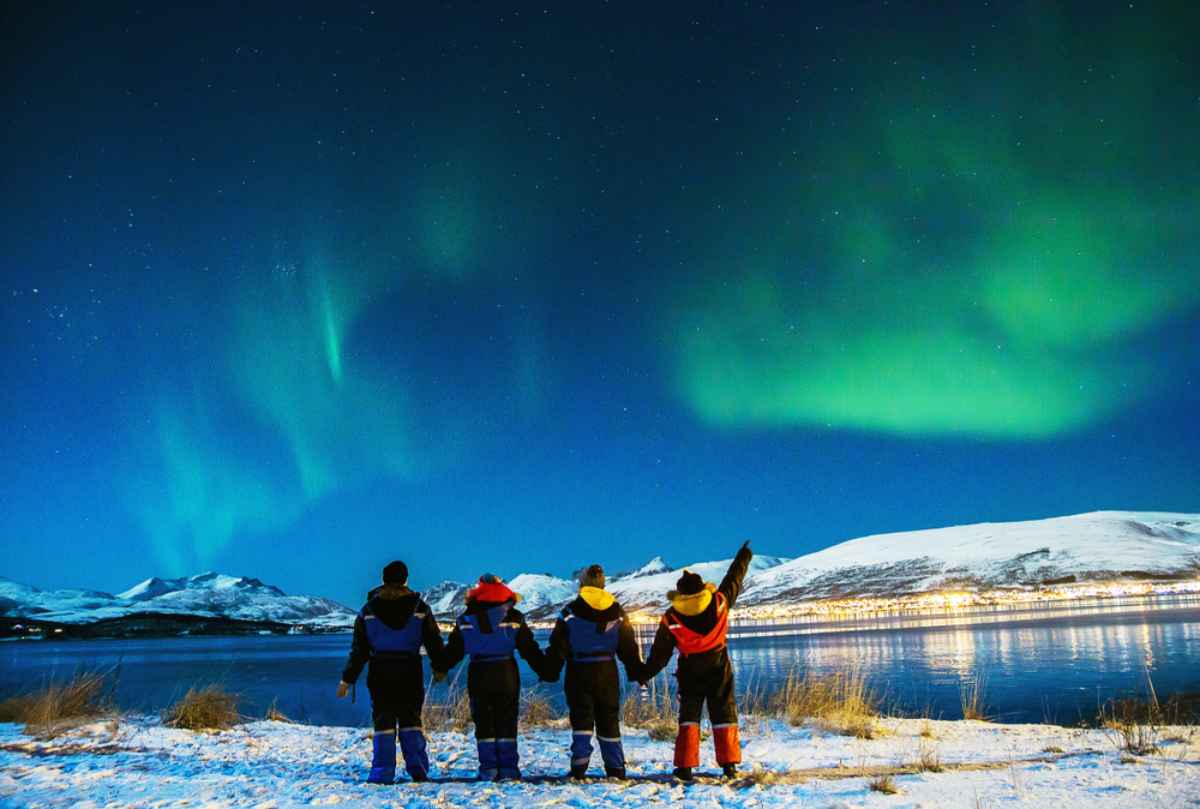
 By
By 
